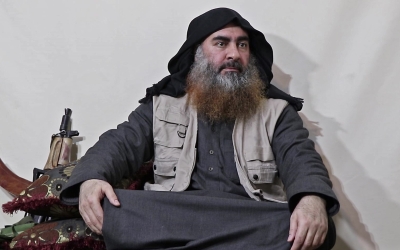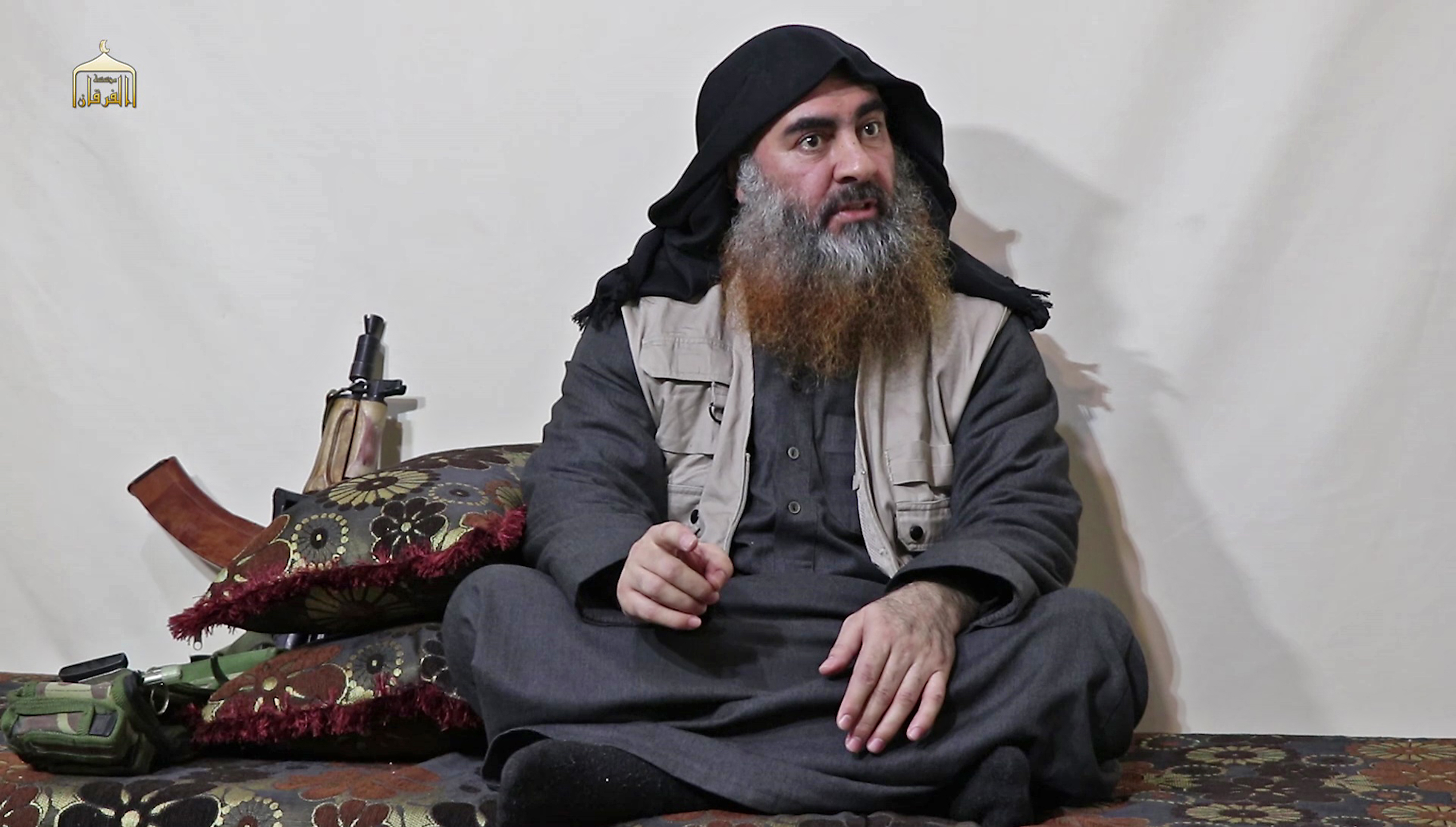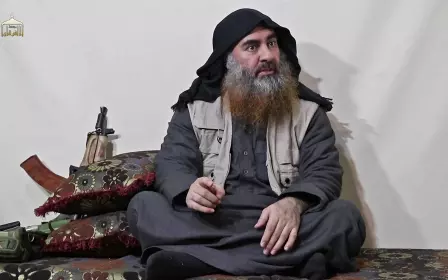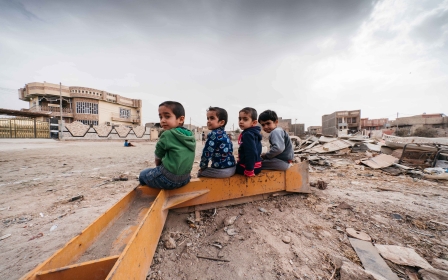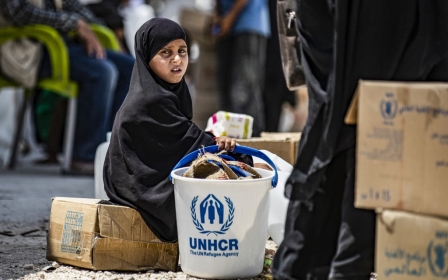Abu Bakr al-Baghdadi: The 'loner' who became leader of Islamic State
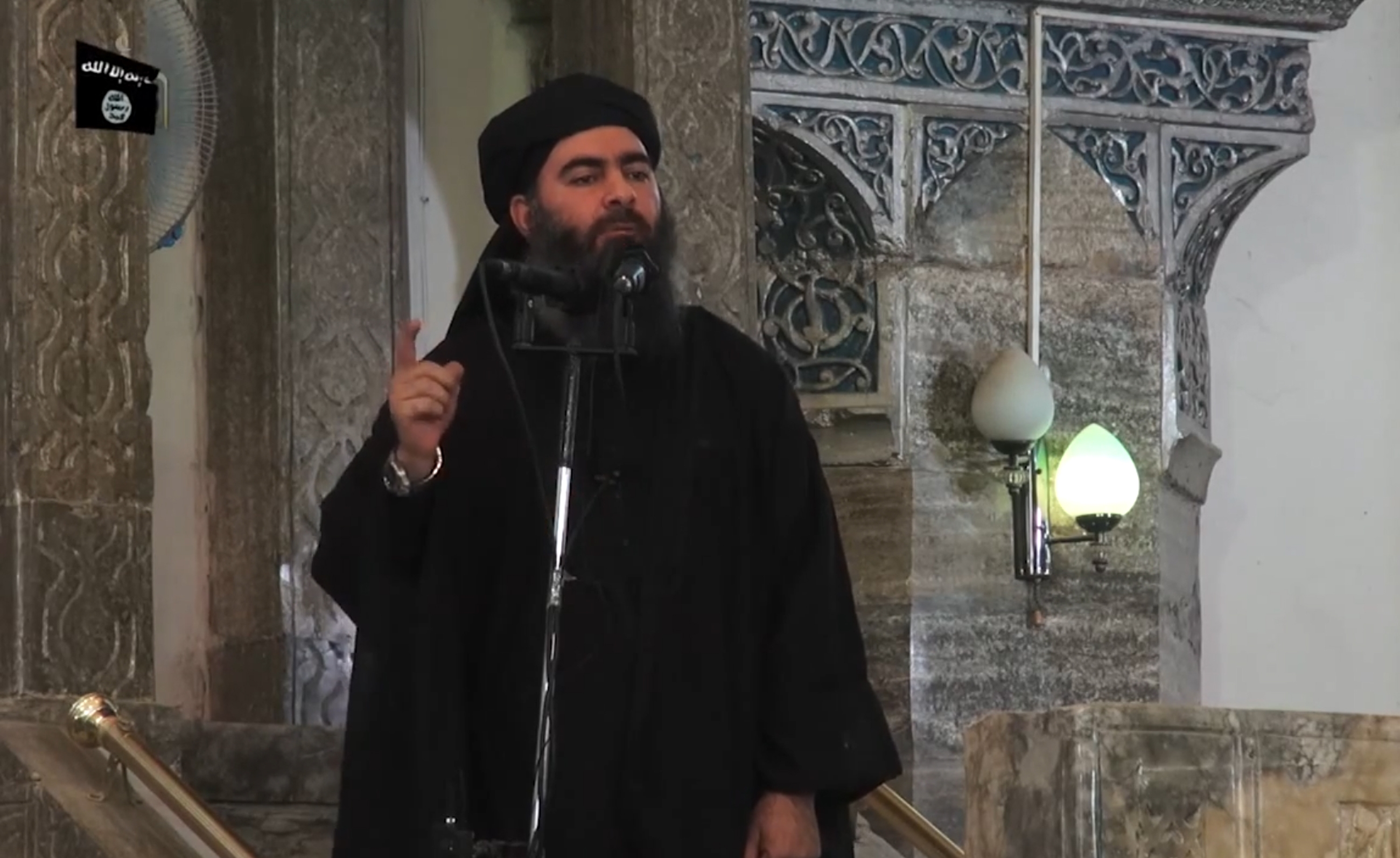
Abu Bakr al-Baghdadi, the leader of the Islamic State group (IS), has been killed in a US military raid in northwestern Syria.
US President Donald Trump said on Sunday that American special forces had carried out an attack targeting the fugitive leader near the Syria-Turkey border late on Saturday.
The death of the IS leader strikes a major blow to the armed group.
Baghdadi was born Ibrahim Awad al-Samarrai in 1971 near the Iraqi town of Samarra, as the third of four sons to a Quran teacher who claimed to be a descendent of the Prophet Muhammad.
'He was quiet, and retiring. He spent time alone'
- Ahmed al-Dabash, university peer
According to a 2015 profile by the Brookings Institution, Baghdadi spent most of his youth studying Islam, but was also known as a keen footballer, referred to by people on his football team at a local mosque as 'our Messi' - after the Barcelona player, Lionel Messi.
New MEE newsletter: Jerusalem Dispatch
Sign up to get the latest insights and analysis on Israel-Palestine, alongside Turkey Unpacked and other MEE newsletters
Baghdadi is said to have lived a relatively quiet childhood and studied Quranic recitation at the Saddam University for Islamic Studies, a highly selective programme in Baghdad, and graduated with a master's degree and a PhD from Baghdad's Islamic University.
"I was with Baghdadi at the Islamic University. We studied the same course, but he wasn’t a friend," Ahmed al-Dabash, the leader of the Islamic Army of Iraq who fought against the allied invasion in 2003, told the Telegraph.
"He was quiet and retiring. He spent time alone".
The 2003 invasion and the 'Jihadi University'
After spending more than a decade living in Tobchi, a poor and ramshackle neighbourhood on the western fringes of Baghdad, Baghdadi decided to join the fight against US troops following the 2003 invasion of Iraq.
He co-founded the Jamaat Jaysh Ahl al-Sunnah wa-l-Jamaah group (JJASJ), which operated in the Iraqi cities of Samarra, Diyala, and Baghdad, and fought against US forces.
US-led coalition troops are reported to have detained Baghdadi in February 2004 while he was visiting the city of Fallujah – the site of fierce opposition to the invasion.
Baghdadi was subsequently held at the Abu Ghraib and Camp Bucca detention centres, the latter of which was later referred to as a "Jihadi University" because of the training provided there.
"At Camp Bucca, the extremists forced moderate detainees to listen to clerics who advocated jihad," Andrew Thompson, a veteran of the US war in Iraq, wrote in the New York Times in 2014.
"The majority of prisoners were illiterate, so they were particularly susceptible. The prisons became virtual terrorist universities: The hardened radicals were the professors, the other detainees were the students, and the prison authorities played the role of absent custodian."
Adel Jasim Mohammed, a former inmate, said he witnessed prisoners "giving courses using classroom boards on how to use explosives, weapons and how to become suicide bombers".
The Americans in charge, he said, "did not stop them".
After being declared a "low level” threat by authorities, Baghdadi was released from Camp Bucca after spending less than 10 months in detention.
According to Aaron Zelin, from the Washington Institute for Near East Policy, Baghdadi’s JJASJ would then pledge allegiance to al-Qaeda in 2006 and join the umbrella organisation.
When the Iraqi chapter of al-Qaeda rebranded itself in late 2006 as the Islamic State of Iraq (ISI), Baghdadi became a member of ISI's senior consultative council. Baghdadi rose to head the group when its leader Abu Umar al-Baghdadi died in April 2010.
Under Baghdadi, ISI went on a strong recruitment drive in impoverished Sunni areas, and would claim responsibility for several large-scale attacks, including bombings against Shia places of worship.
Following the death of Osama bin Laden on 2 May 2011 in Abbottabad, Pakistan, Baghdadi released a statement praising the al-Qaeda chief and threatened violent retaliation for his death.
The Arab Spring as catalyst for the ISI
When protests broke out in Syria in 2011 and were brutally crushed by President Bashar al-Assad, Baghdadi began exploring alliances with armed groups there and in 2013 unilaterally announced the merger of the ISI and the Syria-based al-Nusra Front – forming the Islamic State of Iraq and Syria (ISIS).
Abu Mohammad al-Golani, the leader of the al-Nusra Front, rejected the merging of the two groups and appealed to al-Qaeda leader Ayman al-Zawahiri. Zawahiri then issued a ruling that ISIS should be abolished and that Baghdadi should confine his group's activities to Iraq.
"The Islamic State in Iraq and the Levant will be abolished," Zawahiri said, adding that the al-Nusra Front would remain an independent branch of al-Qaeda.
Zawahiri maintained that Golani and Baghdadi would stay on as the leaders of their respective branches for another year, after which the general leadership of al-Qaeda would decide whether they would keep their posts or be replaced.
Baghdadi, however, dismissed Zawahiri's ruling and took command of a reported 80 percent of the al-Nusra Front's foreign fighters.
In January 2014, clashes broke out between the two in Syria's Deir ez-Zor Governorate and ISIS expelled the al-Nusra Front from the Syrian city of Raqqa.
The armed group consolidated its hold on eastern Syria, and proceeded to expand into western Iraq.
The rise and fall of the so-called Caliphate
In June 2014, after capturing Mosul, Iraq's second-largest city, the group's former spokesman Abu Muhammad al-Adnani announced that ISIS's Shura council - representing influential members of society (ahl al-hali wal-aqd) - had proclaimed "the return of the caliphate” with Baghdadi as its caliph.
A few days later, Baghdadi delivered a Friday sermon from the pulpit of Mosul's al-Nuri Mosque, where he declared himself caliph in his first and last public appearance.
In the last five years, Baghdadi was believed to have been in hiding and maintained limited operational control of the armed group following several attempts on his life.
Rumours of his deteriorating health emerged as far back as 2015, when it was reported that he was badly wounded in an air strike in al-Baaj, near Mosul, and that he would "never lead the organisation" again.
After the air strike, Baghdadi reportedly moved to Raqqa where he kept a low profile and only appeared in audio messages to IS supporters where he made sure to mention current events in order to quash rumours of his death.
His final broadcast came in September 2019.
During that time, IS's fortunes have risen and fallen sharply in both Syria and Iraq.
At its peak in January 2015, IS controlled an area across Syria and Iraq roughly equivalent to the size of the UK and attracted tens of thousands of foreign fighters to its cause.
However, IS control of Mosul officially crumbled in July 2017, when Iraqi Prime Minster Haider al-Abadi declared that troops had recaptured the metropolis. It was later pushed out of its de-facto capital, Raqqa, by US-backed Syrian Kurds.
It's final stronghold - the Syrian town of Baghouz – was captured by Kurdish forces earlier this year, and many of its supporters, including thousands of foreign nationals, are currently being held in camps in northern Syria.
Middle East Eye delivers independent and unrivalled coverage and analysis of the Middle East, North Africa and beyond. To learn more about republishing this content and the associated fees, please fill out this form. More about MEE can be found here.


